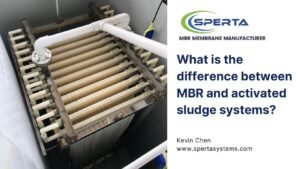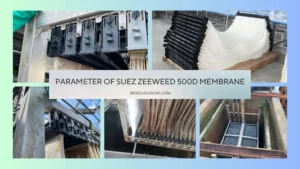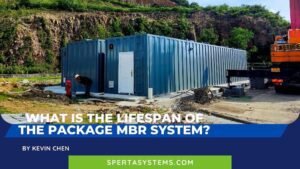When it comes to wastewater treatment, the choice of technology can make a significant difference. Among the various methods available, Membrane Bioreactor (MBR) systems have emerged as a popular choice. But did you know there are different types of MBRs?
MBR, or Membrane Bioreactor, is a technology that combines conventional activated sludge treatment with membrane filtration. The main types include Hollow Fiber, Flat Sheet, Ceramic, and Tubular membranes. Each has its unique features and applications.
Understanding these types can help select the right one for specific wastewater treatment needs. Let’s dive deeper into each type.
What is a Hollow Fiber Membrane?
Hollow Fiber Membranes are thin, tube-like structures. Water flows inside or outside these tubes, and impurities get filtered out. They’re widely used due to their high packing density and ease of cleaning.
How about Flat Sheet Membrane?
Flat sheet membranes are, as the name suggests, flat. They offer a stable performance and are often used in larger wastewater treatment plants. Their structure allows for easy cleaning, making them a popular choice.
What makes Ceramic Membrane special?
Ceramic membranes are known for their durability. They can withstand harsh conditions, making them ideal for challenging wastewater types. Additionally, they have a long lifespan, which can be a cost-effective choice in the long run.
What’s unique about Tubular Membrane?
Tubular Membranes are cylindrical and are often used for treating high-solids wastewater. They can handle a lot of waste and are easy to clean.
Comparison of Different MBR Types
| Type | Shape | Advantages | Common Uses |
|---|---|---|---|
| Hollow Fiber Membrane | Tubular/Strands | High filtration area | General wastewater treatment |
| Flat Sheet Membrane | Flat | Stable performance, easy cleaning | Larger treatment plants |
| Ceramic Membrane | Varied | Durability, long lifespan | Challenging wastewater types |
| Tubular Membrane | Cylindrical | High flow rates, easy backwashing | High flow rate requirements |
Why is it important to know the differences?
Choosing the right MBR type can make a significant difference in the efficiency and cost of wastewater treatment. By understanding the advantages and common uses of each type, one can make an informed decision based on the specific needs of a project.
Conclusion
MBRs play a crucial role in wastewater treatment. With various types available, it’s essential to understand their differences to select the most suitable one. Whether it’s the high filtration area of hollow fiber membranes or the durability of ceramic ones, each type has its unique advantages. The key lies in understanding these benefits and matching them to specific wastewater treatment needs.
The above is information about the different type of the MBR membrane. If you still have questions about the membrane bioreactor or need to purchase MBR membranes, don’t hesitate to contact SPERTA.
Shanghai SPERTA Environmental Technology Co., Ltd. has specialized in producing water treatment products for many years. The company has the core technology of producing MBR membrane components. It has a high production capacity, aiming to build a high-quality brand of MBR production and sales all over the world. If you have any needs, please feel free to contact us.









